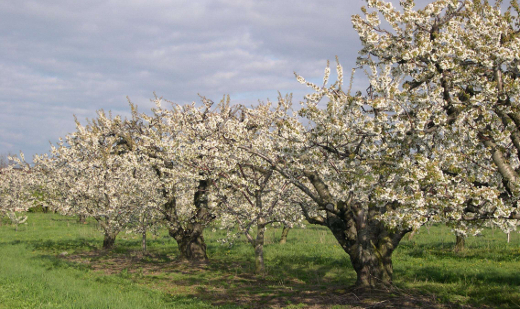It cost too much and took far too long, but the Class EA on Timber Management revolutionized the way the Ontario manages its forests. It also taught us important lessons about environmental assessments that changed the hearing process forever.
The three guests invited to tell the story were Anne Koven (who served on the Environmental Assessment Board during the hearing), John Cary (who helped prepare the Ministry of Natural Resources’s case and was a witness) and Don Huff (who represented Forests for Tomorrow).
The Evolution of Environmental Assessment in Ontario
In 1976, a new Ontario law created a process where the potential environmental impacts of a new project could be examined before the first shovel broke ground. The law that created this process is called the
Environmental Assessment Act (
EAA). Under the process, called an environmental assessment (EA), the proponent of the project outlines potential environmental impacts and actions that would be taken to prevent, mitigate or remedy them; the Ministry provides a response; and Ontario residents can request a public hearing on either the adequacy of the document or whether the undertaking should be approved. In most cases, the Minister then orders the Environmental Assessment Board (the EA Board, which evolved into today's Environmental Review Tribunal), an independent and impartial group of environmental experts responsible for hearing these applications.
Today, the Tribunal also hears applications, appeals and proceedings under other provincial environmental legislation. Based on the subsequent assessment and the ruling of the Board, the Minister of the Environment would either approve the proposal (with or without conditions) or refuse to approve it.
Under what is known as a Class EA, the assessment process for groups of similar projects with predictable and manageable environmental impacts are streamlined. There are currently 11 Class EAs in effect in Ontario, covering undertakings such as municipal roads, sewage and infrastructure projects, rehabilitation activities at abandoned mine sites, flood and erosion control projects, and minor transmission facilities. The Ministry of Natural Resources' first Class EA was for timber management in Northern Ontario.
MNR’s first Class EA
The Ministry of Natural Resources (MNR) had avoided public scrutiny of its timber management practices through a series of orders exempting them from formal assessment under the
EAA. Finally, on December 23, 1985, MNR submitted its draft Class EA for Timber Management on Crown Lands to the MOE for review and approval. This set out the planning and approval process for building access roads, cutting timber and regenerating forests over 385,000 km
2 of Crown Land, with the goal of providing “a continuous and predictable supply of wood for Ontario’s forest products industry.” Following MOE’s initial review, MNR revised the Class EA document and re-submitted it in June 1987.
The Class EA process made us examine what MNR had done and made us improve what we were doing, and do all sorts of new things.
- John Cary
At the time, public opposition was building against many of MNR’s proposed planning and forestry practices. This came to a head with protests against the
Temagami Lake clear cuts and the Red Squirrel logging road. At the same time, a number of interest groups and public agencies were voicing concerns over the spraying of forest pesticides, the extent of allowable clear cuts, and even whether or not the Class EA was the right process for assessing the impacts of the province’s timber management policies. In December 1987, the Minister of the Environment sent MNR’s revised Class EA to hearings before the EA Board in order to ensure “full public participation in the decision-making process.” The Board was tasked with determining, first, whether to accept the Class EA, and second, whether to approve the timber management planning undertaking and, if so, what terms and conditions (if any) should be imposed.
The Hearing
Preliminary meetings were held in January and February 1988, before the main hearings began on May 10th in Thunder Bay. The Board also visited four logging sites to look at timber harvesting operations and reforestation efforts, and organized 15 town hall meetings for northern residents, local businesses and the forest industry to discuss the issues.
While dozens of interested groups participated in at least some of the hearing – First Nations were particularly active – a handful were present throughout the entire proceedings: MNR, MOE, Forests for Tomorrow (FFT) (a coalition of the Federation of Ontario Naturalists, the Sierra Club of Ontario, the Temiskaming Environmental Action Committee and the Wildlands League), the Ontario Forest Industry Association, the Ontario Federation of Anglers and Hunters and the Northern Ontario Tourist Outfitters Association.
Forests for Tomorrow was concerned that the undertaking was not well suited to a Class EA approval, because the effects of timber management are not “small scale,” “predictable” or “minor.” FFT also argued that MNR could not undertake a full EA because it could not describe the forest environment in great enough detail to accurately assess the impacts, and that the basic issue should have been forest, not timber management. Several intervenors doubted that MNR could be trusted to implement the Class EA in a satisfactory way; they worried that approval of the plan would be equivalent to writing a “blank cheque” to MNR.
Two important issues were restrictions on clear cut size, and the definition of forest management to be a more encompassing, more organic concept.
- Anne Koven
Over the 411 hearing days, the Board heard from more than 500 witnesses and amassed 70,000 pages of daily transcripts, more than 2,300 exhibits and tens of thousands of pages of supporting material. The final session concluded on November 12, 1992 in Sudbury, and the Board retired for more than 17 months to write its decision.
The Decision
On April 20, 1994, more than six years after the launch of the hearing process, the EA Board approved MNR’s plan for timber management. In
a massive 560-page decision, which included some 115 detailed terms and conditions, the Board concluded that Ontario’s extensive forest resources were to be managed, under careful regulation, as a renewable resource. At the same time, it set conditions to protect certain old growth areas, as well as limits on the size of those areas that could be clearcut. The Board also required MNR to undertake extensive monitoring of industry compliance and report on impact assessment and silvicultural effectiveness.
The Class EA for Timber Management on Crown Lands was approved for a nine-year period so that the successes and failures of the timber management planning process – and its evolution into an integrated forest management approach – could be “tested in the forest.” The approval outlined the four-stage process that must be followed in preparing forest management plans, including an assessment of the environmental effects of alternatives, and public and Aboriginal consultation requirements. It also required that MNR bring its revised Timber Management Planning Manual back to the Board for public review and approval.
The decision revolutionized the forest industry, and led almost immediately to the Crown Forest Sustainability Act, which was a completely different philosophical approach to forest management.
- Gord Miller
Unfortunately, the interminable timber management hearing left the EA process with a nasty black eye. In its written decision, the Board complained that the “hearing was far too long and far too expensive.” MNR had completed only a small portion of its case when the hearing started – just four of the 17 witness panels – and the whole affair took on an overly legalistic and antagonistic air. As a result, the hearing was delayed for months while MNR completed its witness statements, procedural matters remained unsettled and, when it resumed, the cross-examination seemed endless. Even if everyone had cooperated fully, the hearing would still have lasted at least two years, but the Board complained that “the lawyers seemed more interested in strategies and tactics to fight one another than in concentrating on the evidence.”
The hearing had a deleterious effect on the EA process because it dragged on and on and on and on ... Any politician or any minister of the environment is going ‘EA is radioactive.’
- Don Huff
The scope of the case also put a tremendous strain on the intervenors, several of whom threatened to pull out after the first year if the province didn’t make additional funding available. While the province did increase funding, the Board later concluded in its decision that a “proponent should not have a bottomless pit of money with which to present its case and drag the hearing out, leaving other parties to participate on a shoestring.”
The Future of Forest Management
Despite all the angst, tension and expense, there was finally a set of clear, publicly accessible rules in place to govern forest management in Ontario. In 2003, MOE extended the Class EA for Timber Management, issuing
Declaration Order MNR-71, to replace the original 115 terms and conditions with 55 that cover access roads, harvesting, reforestation, pesticide use, forest maintenance and the preparation, and the review and approval of forest management plans. The Declaration Order removed much of the detail from the original Approval on the basis that the
Crown Forest Sustainability Act, and its regulated manuals provide “a more rigorous regime” than legislation in place when the Approval was issued in 1994.
Certain public consultation mechanisms that the EA put in place ... are still extant and still working, that provide an opportunity to the local public, the regional public or anybody.
- John Cary
Today, the
Forest Management Class EA is an “evergreen” Approval: MNR does not have to seek its renewal, but amendments must be made to ensure the Approval remains current. Like many other Class EAs, amendments can be requested at any time by members of the public, the proponent or other parties, and must be approved by Cabinet. This most recent series of amendments to the Class EA were adopted in 2007. In addition, MNR must prepare and submit to MOE a review of the Class EA planning process and its implementation of the conditions in the Approval every five years. The first of these was submitted in June 2009 and the next is due in June 2014. MNR is also required to submit to the Legislature a five-year
State of the Forest Report, which was done in 2006 and 2012.
However, much of the impact of the Timber Management Class EA decision could ultimately be undone by administrative tinkering that has occurred over the last decade. As part of MNR’s 2012 budget to improve ministry services while cutting costs, the government is considering amendments to the
Crown Forest Sustainability Act, 1994. Among these, it could eliminate the requirement for forest management plans, extend forest resource licences indefinitely, and allow unlimited exemptions of forest operations from certain requirements of the Act. Only time will tell what the lasting impact of the landmark Class EA decision released nearly 20 years ago will be.






